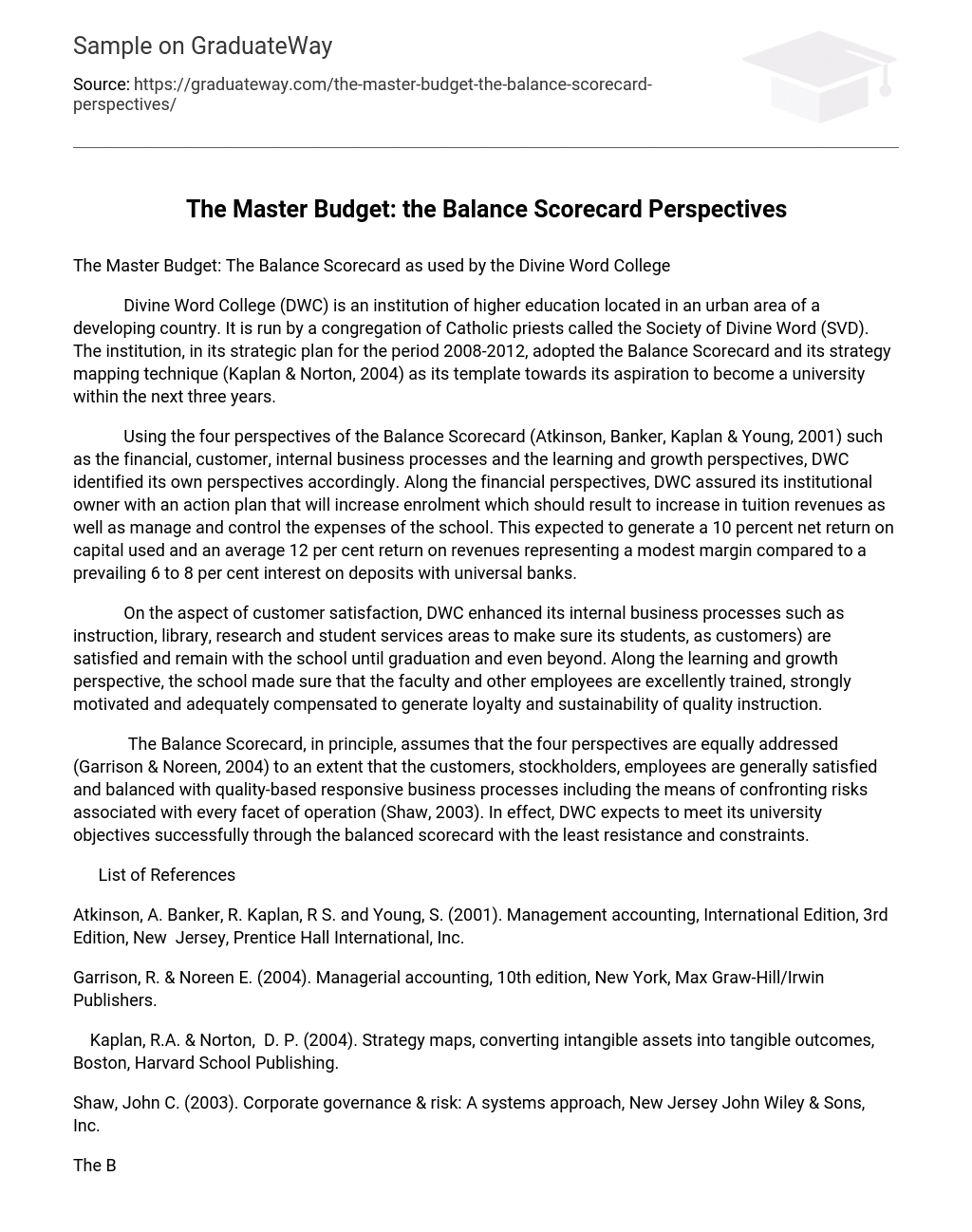Divine Word College (DWC) is an institution of higher education located in an urban area of a developing country. It is run by a congregation of Catholic priests called the Society of Divine Word (SVD). The institution, in its strategic plan for the period 2008-2012, adopted the Balance Scorecard and its strategy mapping technique (Kaplan & Norton, 2004) as its template towards its aspiration to become a university within the next three years.
Using the four perspectives of the Balance Scorecard such as the financial, customer, internal business processes and the learning and growth perspectives, DWC identified its own perspectives accordingly. Along the financial perspectives, DWC assured its institutional owner with an action plan that will increase enrolment which should result to increase in tuition revenues as well as manage and control the expenses of the school. This expected to generate a 10 percent net return on capital used and an average 12 per cent return on revenues representing a modest margin compared to a prevailing 6 to 8 per cent interest on deposits with universal banks.
On the aspect of customer satisfaction, DWC enhanced its internal business processes such as instruction, library, research and student services areas to make sure its students, as customers) are satisfied and remain with the school until graduation and even beyond. Along the learning and growth perspective, the school made sure that the faculty and other employees are excellently trained, strongly motivated and adequately compensated to generate loyalty and sustainability of quality instruction.
The Balance Scorecard, in principle, assumes that the four perspectives are equally addressed to an extent that the customers, stockholders, employees are generally satisfied and balanced with quality-based responsive business processes including the means of confronting risks associated with every facet of operation. In effect, DWC expects to meet its university objectives successfully through the balanced scorecard with the least resistance and constraints.
List of References
Atkinson, A. Banker, R. Kaplan, R S. and Young, S. (2001). Management accounting, International Edition, 3rd Edition, New Jersey, Prentice Hall International, Inc.
Garrison, R. & Noreen E. (2004). Managerial accounting, 10th edition, New York, Max Graw-Hill/Irwin Publishers.
Kaplan, R.A. & Norton, D. P. (2004). Strategy maps, converting intangible assets into tangible outcomes, Boston, Harvard School Publishing.
Shaw, John C. (2003). Corporate governance & risk: A systems approach, New Jersey John Wiley & Sons, Inc.
The Balance Scorecard Institute, (2009), What is the Balance Scorecard? A Strategic Management Group Company: website: http://www.balancedscorecard.org/BSCResources/AbouttheBalancedScorecard/tabid/55/Default.aspx; Retrieved March 7, 2009





